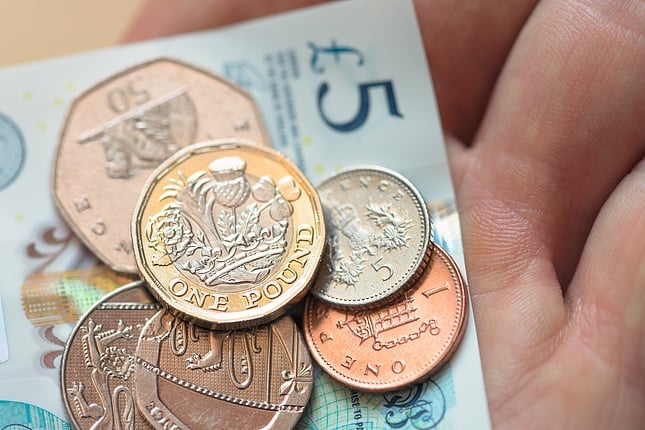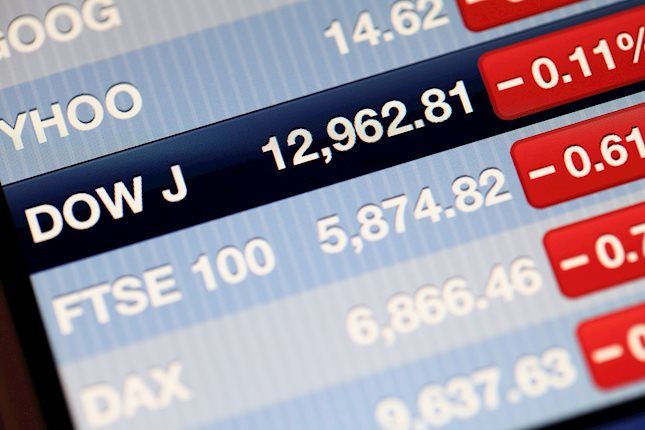Most recent article: Canadian Dollar looks for Tuesday recovery after early declines
- The Canadian Dollar sees downside pressure on Monday.
- Canadian economic calendar data is limited in the early week, USD flows to dominate.
- The next BoC rate call is coming up on Wednesday.
The Canadian Dollar (CAD) pared back some of last week’s gains as the US Dollar (USD) sees a broad-market recovery on the back of renewed risk aversion. The Canadian Dollar is down roughly a third of a percent against the Greenback on Monday.
Canada is absent from the economic calendar for the early half of the week, with the latest rate call from the Bank of Canada (BoC) due on Wednesday. The BoC is expected to hold rates steady at 5% for the fourth meeting in a row.
Daily Digest Market Movers: Risk aversion is back on the menu as investor appetite sours, Canadian Dollar softens as US Dollar recovers
- The Canadian Dollar has given back a third of a percent against the US Dollar in Monday trading.
- The CAD has performed strongest against the Antipodeans to kick off the trading week, up around two-thirds of a percent and half of a percent against the Aussie (AUD) and the Kiwi (NZD), respectively.
- The Canadian Dollar is seeing Monday gains against all major currencies except for the US Dollar.
- The BoC’s upcoming rate call should represent an entire quarter of no rate hikes, as long as policymakers meet markets in the middle.
- The BoC raised eyebrows when they gave interest rates an additional 25-basis-point bump back in July.
- Monday’s markets are chewing on a miss in US Factory Orders, which also saw a downside revision to previous figures.
- US Factory Orders declined 3.6% in October, falling even further below the median market forecast of a 2.6% contraction.
- September’s US Factory Orders were revised from 2.6% to 2.3%.
- Tuesday will bring more of the same CAD-light data docket, with the US ISM Services Purchasing Managers Index (PMI) being the key data focus.
Canadian Dollar price today
The table below shows the percentage change of Canadian Dollar (CAD) against listed major currencies today. Canadian Dollar was the weakest against the US Dollar.
| USD | EUR | GBP | CAD | AUD | JPY | NZD | CHF | |
| USD | 0.47% | 0.63% | 0.35% | 0.94% | 0.56% | 0.81% | 0.56% | |
| EUR | -0.49% | 0.16% | -0.12% | 0.48% | 0.06% | 0.36% | 0.09% | |
| GBP | -0.65% | -0.15% | -0.28% | 0.31% | -0.07% | 0.19% | -0.07% | |
| CAD | -0.35% | 0.13% | 0.28% | 0.59% | 0.19% | 0.47% | 0.20% | |
| AUD | -0.95% | -0.48% | -0.31% | -0.60% | -0.41% | -0.10% | -0.39% | |
| JPY | -0.60% | -0.07% | 0.24% | -0.19% | 0.40% | 0.28% | -0.01% | |
| NZD | -0.82% | -0.34% | -0.18% | -0.46% | 0.12% | -0.26% | -0.26% | |
| CHF | -0.58% | -0.08% | 0.07% | -0.21% | 0.39% | 0.00% | 0.26% |
The heat map shows percentage changes of major currencies against each other. The base currency is picked from the left column, while the quote currency is picked from the top row. For example, if you pick the Euro from the left column and move along the horizontal line to the Japanese Yen, the percentage change displayed in the box will represent EUR (base)/JPY (quote).
Technical Analysis: Canadian Dollar attempts to arrest further declines after Greenback bidders draw a line in the USD/CAD at 1.3500
The Canadian Dollar (CAD) fell back against the US Dollar (USD) in a broad-market risk rebound that sent the USD/CAD higher after rebounding from the 1.3500 handle.
Near-term bullish momentum remains limited with the USD/CAD getting snagged on the 50-hour Simple Moving Average (SMA), and Monday’s current high bid sits at 1.3560.
Intraday action sees a technical ceiling at the 200-hour SMA near 1.3610, and the figure for Canadian Dollar bidders to beat will be Monday’s bottom bids at 1.3480.
Monday’s pullback brings omens of US Dollar (USD) strength on the daily candlesticks, with the 200-day SMA acting as technical support just above the 1.3500 handle.
Adding to the US Dollar rebound picture, technical indicators are leaning firmly into exhaustion territory, with the 14-day Relative Strength Index (RSI) tapping the lower bound, indicating oversold conditions.
On the other hand, a bullish continuation of the Canadian Dollar’s recent strength will see a fresh run at September’s low bids near 1.3380.
USD/CAD Hourly Chart

USD/CAD Daily Chart

Canadian Dollar FAQs
What key factors drive the Canadian Dollar?
The key factors driving the Canadian Dollar (CAD) are the level of interest rates set by the Bank of Canada (BoC), the price of Oil, Canada’s largest export, the health of its economy, inflation and the Trade Balance, which is the difference between the value of Canada’s exports versus its imports. Other factors include market sentiment – whether investors are taking on more risky assets (risk-on) or seeking safe-havens (risk-off) – with risk-on being CAD-positive. As its largest trading partner, the health of the US economy is also a key factor influencing the Canadian Dollar.
How do the decisions of the Bank of Canada impact the Canadian Dollar?
The Bank of Canada (BoC) has a significant influence on the Canadian Dollar by setting the level of interest rates that banks can lend to one another. This influences the level of interest rates for everyone. The main goal of the BoC is to maintain inflation at 1-3% by adjusting interest rates up or down. Relatively higher interest rates tend to be positive for the CAD. The Bank of Canada can also use quantitative easing and tightening to influence credit conditions, with the former CAD-negative and the latter CAD-positive.
How does the price of Oil impact the Canadian Dollar?
The price of Oil is a key factor impacting the value of the Canadian Dollar. Petroleum is Canada’s biggest export, so Oil price tends to have an immediate impact on the CAD value. Generally, if Oil price rises CAD also goes up, as aggregate demand for the currency increases. The opposite is the case if the price of Oil falls. Higher Oil prices also tend to result in a greater likelihood of a positive Trade Balance, which is also supportive of the CAD.
How does inflation data impact the value of the Canadian Dollar?
While inflation had always traditionally been thought of as a negative factor for a currency since it lowers the value of money, the opposite has actually been the case in modern times with the relaxation of cross-border capital controls. Higher inflation tends to lead central banks to put up interest rates which attracts more capital inflows from global investors seeking a lucrative place to keep their money. This increases demand for the local currency, which in Canada’s case is the Canadian Dollar.
How does economic data influence the value of the Canadian Dollar?
Macroeconomic data releases gauge the health of the economy and can have an impact on the Canadian Dollar. Indicators such as GDP, Manufacturing and Services PMIs, employment, and consumer sentiment surveys can all influence the direction of the CAD. A strong economy is good for the Canadian Dollar. Not only does it attract more foreign investment but it may encourage the Bank of Canada to put up interest rates, leading to a stronger currency. If economic data is weak, however, the CAD is likely to fall.
Information on these pages contains forward-looking statements that involve risks and uncertainties. Markets and instruments profiled on this page are for informational purposes only and should not in any way come across as a recommendation to buy or sell in these assets. You should do your own thorough research before making any investment decisions. FXStreet does not in any way guarantee that this information is free from mistakes, errors, or material misstatements. It also does not guarantee that this information is of a timely nature. Investing in Open Markets involves a great deal of risk, including the loss of all or a portion of your investment, as well as emotional distress. All risks, losses and costs associated with investing, including total loss of principal, are your responsibility. The views and opinions expressed in this article are those of the authors and do not necessarily reflect the official policy or position of FXStreet nor its advertisers. The author will not be held responsible for information that is found at the end of links posted on this page.
If not otherwise explicitly mentioned in the body of the article, at the time of writing, the author has no position in any stock mentioned in this article and no business relationship with any company mentioned. The author has not received compensation for writing this article, other than from FXStreet.
FXStreet and the author do not provide personalized recommendations. The author makes no representations as to the accuracy, completeness, or suitability of this information. FXStreet and the author will not be liable for any errors, omissions or any losses, injuries or damages arising from this information and its display or use. Errors and omissions excepted.
The author and FXStreet are not registered investment advisors and nothing in this article is intended to be investment advice.
Recommended content
Editors’ Picks

EUR/USD defends gains near 1.0500 ahead of Fed rate call
EUR/USD defends minor bids near 1.0500 in the European session on Wednesday. The pair's further upside remains capped as traders stay cautious and refraining from placing fresh bets ahead of the Federal Reserve poicy announcements.

GBP/USD falls below 1.2700 after UK inflation data
GBP/USD remains pressured below 1.2700 in Eurpean trading on Wednesday. The data from the UK showed that the annual CPI inflation rose to 2.6% in November from 2.3%, as expected. Investors gear up for the Fed's monetary policy announcements.

Gold’s upside attempts remain limited with all eyes on the Fed
Gold is practically flat on Wednesday after bouncing up from a one-week low the previous day. The precious metal remains on the defensive as the market braces for the outcome of the last Federal Reserve’s (Fed) meeting of the year.

Altcoins Cardano and Avalanche poised for double-digit correction
Cardano (ADA) and Avalanche (AVAX) prices continue to trade down on Wednesday after correcting more than 7% and 8%, respectively, so far this week. The technical outlook and on-chain metrics for both altcoins suggest the continuation of the pullback.

DJIA ends Tuesday in the red, sheds roughly 270 points
The Dow Jones Industrial Average shed another 360 points at its lowest on Tuesday as losses accumulate in the key index and begin to gather speed. The S&P 500 and the Nasdaq also closed in the red.

Best Forex Brokers with Low Spreads
VERIFIED Low spreads are crucial for reducing trading costs. Explore top Forex brokers offering competitive spreads and high leverage. Compare options for EUR/USD, GBP/USD, USD/JPY, and Gold.